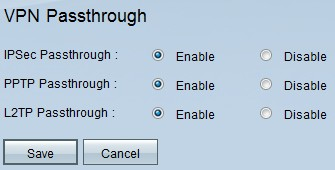In our previous article we explained how to enable VPN passthrough on TP-link router, here we will clarify how to configure VPN passthrough cisco router. Cisco routers are considered one the most common used routers in many areas all over the world.

More about VPN passthrough:
VPN Passthrough enables you to access a remote network without any obstacle even if through the firewall of the used router.
Using a VPN Passthrough helps two secured networks to connect between them over the Internet. When VPN passthrough is enabled on the network, it allows the VPN traffic that is initiated from VPN client to passthrough to the Internet and allows the VPN connection to be established successfully. So you may need to configure VPN passthrough cisco router or any other products.
Some routers does not allow VPN traffic to pass through them because they maybe use features which form an obstacle such as NAT feature in the home wireless routers allowing several computers to share the same internet connection. This feature is conflicted with allowing VPN traffic to passthrough the router.
VPN passthrough in routers means that the device does not support one of the endpoints. But it allows traffic from those endpoints to passthrough.
All NETGEAR routers support VPN passthrough for IPSec, L2TP, and PPTP.
Now we want to know how to configure VPN passthrough cisco router.
Which types of cisco routers support VPN passthrough? Which VPN protocols are supported by them?
You can configure VPN passthrough cisco router for these types “RV016, RV042, RV042G and RV082 VPN Routers”
IPSec Passthrough, PPTP Passthrough, and L2TP Passthrough are the three VPN types available on RV016, RV042, RV042G and RV082 VPN Routers. From here the importance of VPN Passthrough comes because all the routers used recently consist of Network Address Translation NAT which is a feature allows several computers to share the same internet connection, and both PPTP and IPSec do not work with NAT which means NAT will forms a big problem to allow VPN traffic to passthrough the router. So, we need to configure VPN passthrough cisco router to allow PPTP, L2TP and IPSec.
How to configure VPN passthrough cisco router?
The way to configure VPN passthrough cisco router is the same for TP-link router and most of routers follows these steps to enable or configure VPN passthrough.
Note: You do not need to open any specific ports to enable VPN passthrough, it will automatically work. Before you configure VPN passthrough cisco router, you must setup the basic VPN on the host and the remote side.
Step1:
Log into the web configuration utility and tap on VPN section, then VPN passthrough.
Step 2:
Enable the radio button of each one of VPN passthroughs.
By default, all the VPN Passthroughs are enabled.
- IPSec Passthrough:
Internet Protocol Security (IPSec) is a suite of protocols used to offers secure exchange of packets. IPSec Passthrough allows IPSec tunnels to pass through the router.
- PPTP Passthrough:
Point-to-Point Tunneling Protocol (PPTP) allows the Point-to-Point Protocol (PPP) to be tunneled through an IP network.
- L2TP Passthrough:
Layer 2 Tunneling Protocol (L2TP) is used to enable Point-to-Point sessions through internet on Layer 2 level.

Step 3:
Click Save.
Finally you knew how to configure VPN passthrough cisco router to allow VPN traffic to be established successfully on it.


